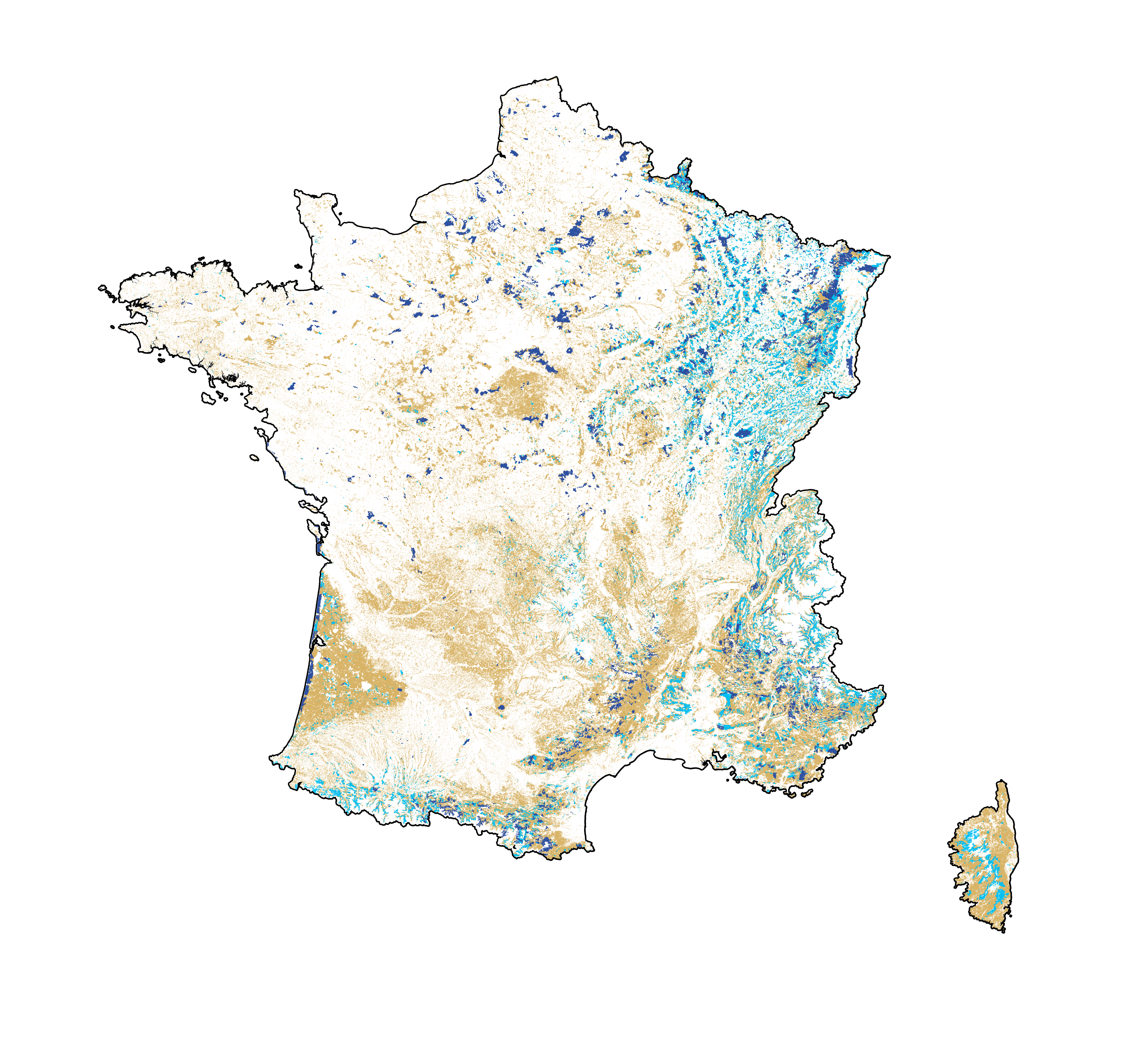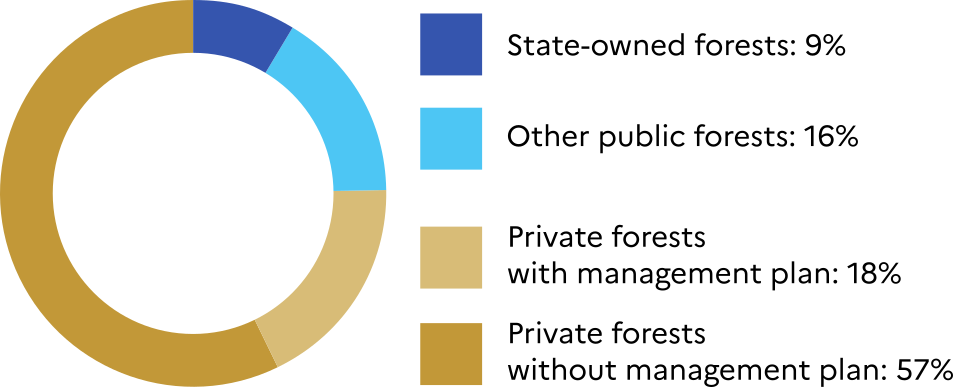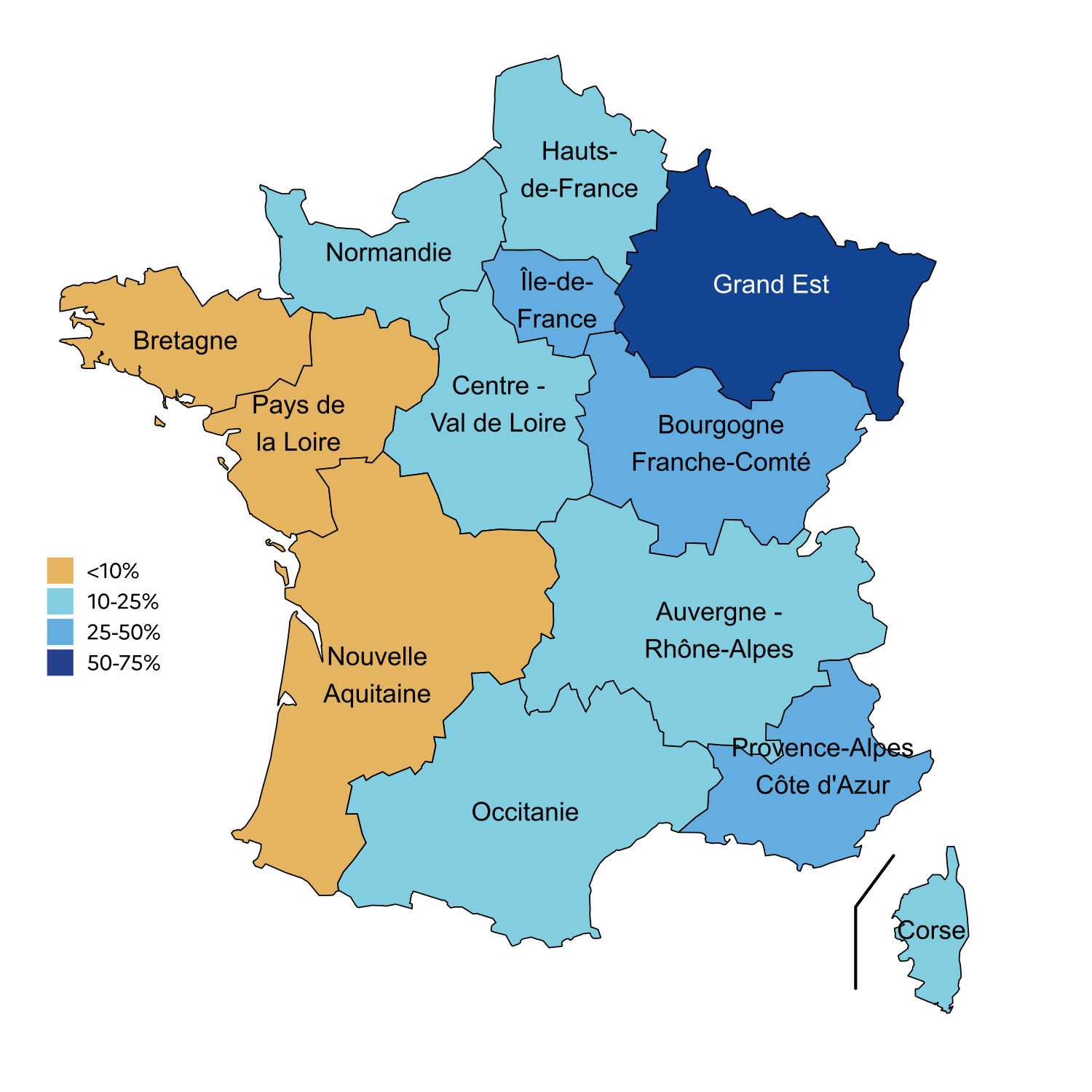
Current state | [1] |
The majority of forests in France are privately owned. Three-quarters of the metropolitan French forest area, totaling 13.1 million hectares, belong to private owners. In Europe, France has one of the highest proportions of privately-owned forest, behind Portugal, Austria and Sweden (cf. Global forest resources assessment - 2015).
State-owned forests represent 9% of the metropolitan forested area, with the remainder consisting of other public forests, mainly communal forests.
The share of public forest has slightly decreased since the last century, indicating that the expansion of the forested area is primarily driven by privately-owned forests.

|
 |
|
Forested area by property class.
|
State forests are more frequent in northern France.
The state-owned forest of Orléans, located in the Centre Val de Loire region, is the largest state-owned forest in France, covering approximately 35 000 hectares.
Public forests other than state forests are common in eastern France (Grand Est and Bourgogne-Franche-Comté) and rare in western France due to historical reasons.
 |
| Proportion of public forests by administrative region |
The distribution of ownership categories varies by region. In western France (Brittany, Pays de la Loire and Nouvelle-Aquitaine regions), private forests account for more than 90% of the forested area. The Grand-Est region is the only one where privately-owned forests are less important compared to public forests, accounting for only 45% of the total forest area.
Evolution
The area of state forests did not change since 1985 [2]. These forests cover approximately 1.5 million hectares.
The area of public forests other than state-owned forests increased by 22%, from 2.3 millions hectares in 1985 to 2.8 million hectares today.
The area of private forests has also risen, with a 26% increase since 1985, corresponding to a gain of 2.7 million hectares within a 38-year period.











